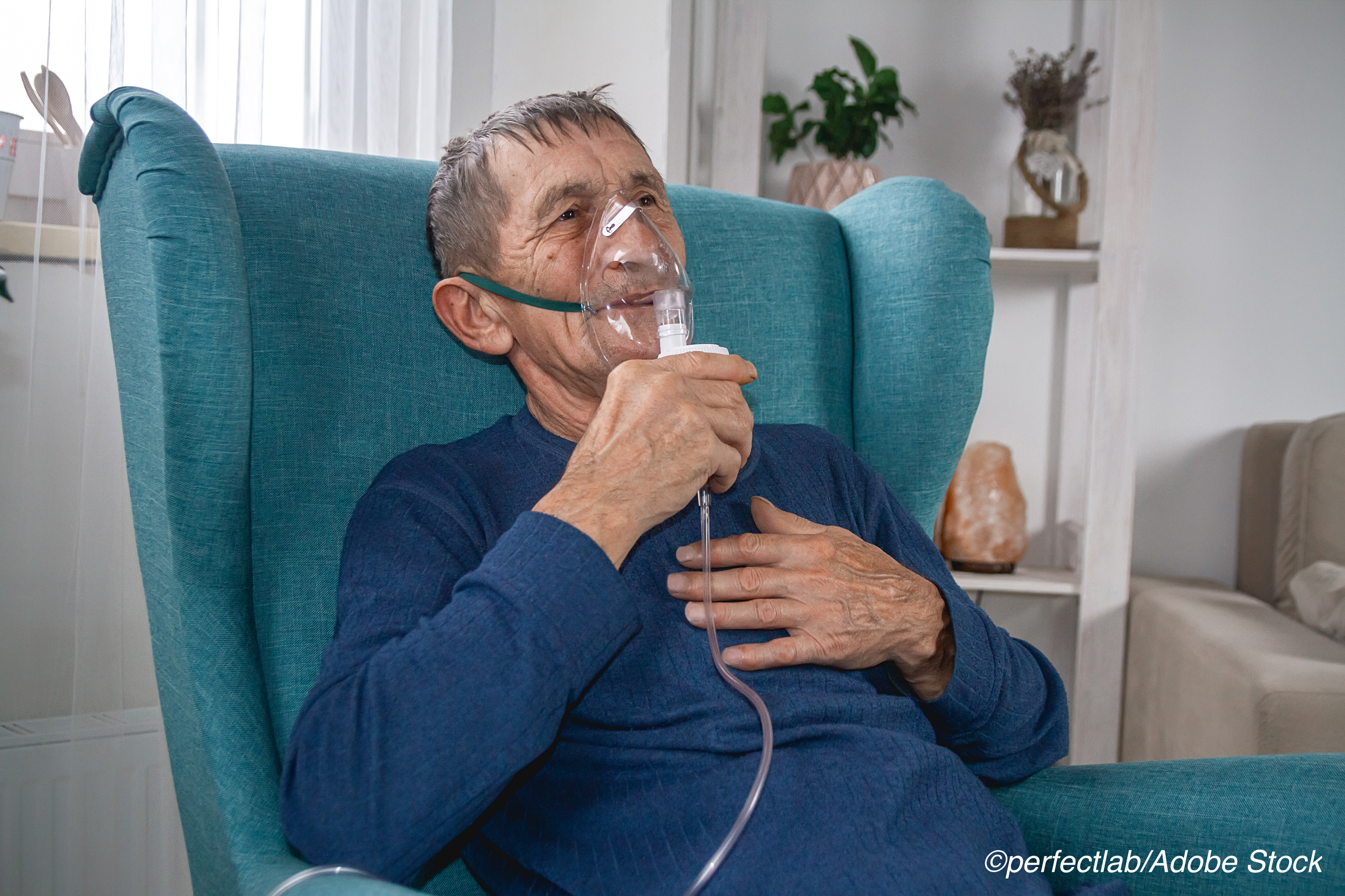
Discharging Covid-19 pneumonia patients to home with supplementary ambulatory oxygen resulted in low mortality rates and low 30-day readmission rates, according to a multicenter, retrospective cohort study from California.
“Ambulatory management of Covid-19 with home oxygen has an acceptable safety profile, and the expected practice approach may help optimize outcomes, by ensuring right care in the right place at the right time and preserving access to acute care during the Covid-19 pandemic,” Josh Banerjee, MD, MPH, MS, of the Los Angeles County and University of Southern California Medical Center, and colleagues wrote in JAMA Network Open.
The Covid-19 pandemic disrupted patient care on a dramatic scale, and one of the hallmarks of patient-centered care, as outlined by the Institute for Healthcare Innovations (IHI), is to give high quality care to the right patient in the right place at the right time, Banerjee and colleagues wrote. But how can this be done during a pandemic that has presented unforeseen challenges to ensuring safety for inpatients and has put extra burden on acute care hospital capacity?
The Los Angeles County Department of Health Services (LA County DHS) “has committed to reducing practice variation across all specialties, and an important tool in standardization is the expected practice (EP)… In March 2020, recognizing the need to provide real-time decision support on a global pandemic for a workforce of approximately 22,000 employees, the LA County DHS created a new library of EPs specifically devoted to the evaluation and management of Covid-19,” Banerjee and colleagues wrote. “An important aspect of ensuring patient safety and maintaining hospital access during the pandemic was the establishment and implementation of an EP about use of home oxygen to enable earlier discharges.”
Banjerjee and colleagues undertook the EP approach, dubbed the Covid-19 Admission, Discharge, and Home O2 (SAFE@HOME O2), that abided by several principal care expectations:
- Patients who had Covid-19 pneumonia, but were clinically stable, requiring at least 3 L per minute of nasal cannula oxygen with a 92% oxygen saturation, could be discharged to an ambulatory setting with caveats to return. These are patients with no other indication for which they needed care in an acute setting.
- The patients discharged needed to be provided access to “oxygen durable medical equipment delivery (DME) and access after discharge. This availability included stocking portable oxygen and pulse oximeters from the DME vendor in the emergency department.” This allowed patients to be discharged with the needed DME.
- Nurses must phone the discharged patients, and have physician support if needed, within the first 12-18 hours after discharge.
The objective of their study was to assess how well this EP approach worked with patients who were discharged to home or quarantine housing with ambulatory oxygen. Banerjee and colleagues looked at patients discharged from two large urban public hospitals that cared primarily for Medicaid patients from March 20 to Aug. 19, 2020.
There were 621 patients (404 male [65.1%]; 217 female [34.9%]) in the study who were discharged with home oxygen either from the emergency department (149; 24%) or from inpatient encounters (472; 76%). Their median age was 51 years old (interquartile range 45-61). Most of the patients received Medicaid (75%), and the majority spoke Spanish (84%).
“The clinical follow-up program consisted of a nurse manager who assigned cases and performed quality assurance, 3 nurses who shared a schedule to perform follow-up calls, a physician on call for support, and the equipment vendor support team who were accessible at all times for DME troubleshooting,” Banerjee and colleagues wrote. “Calls were performed 7 days a week and continued daily until patients demonstrated, through verbal teach-back, that they understood how to use oxygen equipment and indications for return to acute care.”
Along with the verbal education, the patients were also discharged with an educational handout, as well as access to a “video regarding safety parameters and self-management with home oxygen,” the researchers explained. However, while the patients had to have access to telephone follow-up, literacy or ability to access the video was not a requirement for discharge.
The patients discharged to home with supplementary oxygen were followed for a median of 26 days (interquartile range 25-27 days). Among the findings:
- All-cause mortality was 1.3% (95%CI, 0.6%-2.5%).
- None of the patients died at home or during transport to acute care.
- Fifty-three were readmitted after the trial and 8 of them died. However, a formal cohort analysis was not performed on hospital mortality.
- None of the patients were lost to follow-up.
- All-cause return admission within 30 days was 8.5% (95% CI, 6.2%-10.7%).
Limitations of the study include its observational design “and potential for indication, selection, and spectrum biases in program enrollment,” Banerjee and colleagues noted. They also lacked comparable data on patients not discharged and not requiring home oxygen. Acute care duration data were also not available. “All of these factors limit the generalizability of this study’s findings,” the author wrote.
-
Discharging Covid-19 pneumonia patients to home with supplementary ambulatory oxygen resulted in low mortality rates and low 30-day readmission rates, according to a multicenter, retrospective cohort study from California.
-
The California hospitals implemented an expected practice approach that included several key principals to ensure patients understood their discharge instructions, how to manage their oxygen use, and also made sure the oxygen durable medical equipment was available at point of discharge.
Candace Hoffmann, Managing Editor, BreakingMED™
Banerjee disclosed no relevant relationships.
Cat ID: 190
Topic ID: 79,190,502,728,791,730,933,190,926,192,927,462,928,925,934


